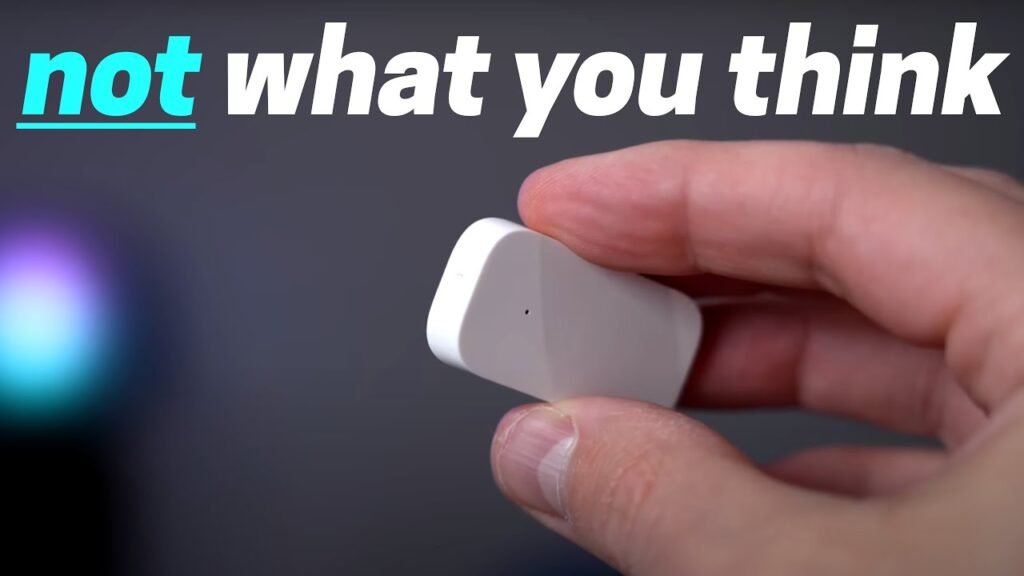This is EXACTLY how I fix my smart home.

This is EXACTLY how I fix my smart home.
Discover 8 effective tips to troubleshoot and fix your smart home issues effortlessly!
Master Your Smart Home: 8 Essential Fixes for Common Problems
How frustrating is it when your smart home gadgets refuse to cooperate? You’re not alone—in an age where technology is supposed to simplify our lives, the reality is that things can go awry. Imagine your smart lights flickering at odd hours or your security system suddenly going offline. The worst part? It feels like you’re left in the dark, literally and figuratively. But fear not! This comprehensive guide unveils the most effective solutions to restore harmony in your smart abode. Get ready for a transformation in how you manage and troubleshoot your smart home devices!
1. The Power Cycle Technique
One of the simplest yet most effective fixes for any technological glitch is also the most overlooked: turning the device off and then back on. This small step can reset the internal systems, often clearing minor bugs.
- Identify the device that’s malfunctioning.
- Disconnect it from the power source or remove its batteries.
- Wait for at least 30 seconds.
- Reconnect the power or replace the batteries.
- Check if the issue persists.
“In many cases, a power cycle can resolve the issue without further need for troubleshooting.” – Tech Expert
Tip: Always try this method first, as it’s quick and requires no tools!
2. Battery Replacement
If your smart home devices rely on batteries, consider that they might be running low. Weak batteries can lead to connectivity issues and erratic behavior. Regular battery checks can save you from bigger problems down the road.
- Check the battery level through the device app.
- Replace with fresh batteries, ensuring they are installed correctly.
- Test the device again for functionality.
Did You Know? Many devices alert you when battery levels are low; ensure notifications are enabled.
3. Resetting Contact Sensors
Contact sensors, essential for security and automation, may sometimes lose their connection to the hub. Resetting them can help restore functionality. Each device may have a unique reset process, so check the manual for specifics.
- Locate the reset button on the sensor.
- Press and hold for the designated time as per the manufacturer’s instructions.
- Re-add the device to your smart home system.
Pro Tip: Document the reset procedure for future reference!
4. Managing Data Settings
Sometimes, data usage settings can cause interruptions in connectivity. If your smart devices use mobile data, consider turning off data for apps that don’t need it, especially when troubleshooting.
- Go to your device’s settings.
- Select ‘Data Usage’ and manage permissions.
- Turn off mobile data for non-essential apps.
Quick Insight: This helps in reducing background conflicts with your smart home devices.
5. Debugging WiFi Issues
WiFi is the backbone of your smart home. If devices are acting strange, the issue may be with your network. Tools that help identify dead zones can be vital.
- Run a speed test to determine your internet speed.
- Check for interference from other devices, walls, or appliances.
- Consider a WiFi extender or upgrading your router if problems persist.
| Issue | Solution | Notes |
|---|---|---|
| Slow Response | Run speed tests | Check for excessive usage on the network |
| Disconnected Devices | Reset router | A common fix for connectivity issues |
| No WiFi in Certain Areas | Install extenders | Improves coverage significantly |
Reminder: Keep your firmware updated for the best performance!
6. Troubleshooting Zigbee and Z-Wave Devices
Zigbee and Z-Wave devices often require a bit more attention. Issues can arise due to range or interference. Knowing how to effectively troubleshoot these can save you time and frustration.
- Ensure the hub is updated with the latest firmware.
- Check the positions of Zigbee or Z-Wave devices to reduce interference.
- Consider adding range extenders for better connectivity.
“A solid network foundation is essential for a flawless smart home experience.” – Smart Home Developer
Don’t Forget: Regular maintenance of your devices can prevent connectivity issues!
7. Reloading Home Automation Integrations
Finally, if your smart devices still don’t function as expected, reloading their integration may help. Sometimes updates or changes disrupt communication between systems.
- Access your home automation platform.
- Identify the problematic integration.
- Reload or reconfigure it following the platform’s instructions.
Important: Document any custom configurations to avoid losing them during reloading.
8. Regular Firmware and Hub Updates
Keeping your devices and hub’s firmware updated is crucial for optimal performance. Updates often include crucial security patches and new features!
- Check your device settings for available updates.
- Follow the prompts to update the firmware.
- Reboot the device after the update for changes to take effect.
Fact: Updating your devices regularly can enhance performance and connectivity.
FAQ
What should I do if my smart devices won’t connect?
First, ensure that your WiFi network is operational. Then check if your devices’ firmware is updated and try resetting the devices.
How often should I replace batteries in my smart devices?
It’s advisable to check battery levels monthly and replace them as necessary, particularly in frequently used devices.
What is the best way to extend WiFi coverage in my smart home?
Consider using a WiFi extender or a mesh network system to enhance coverage in dead zones.
Can I reset my smart home devices myself?
Yes, most smart home devices come with a reset button. Follow the manufacturer’s instructions to safely reset the device.
What to do if a specific device keeps disconnecting?
Check the distance from the hub and ensure there are no obstructions. Also, updating the firmware could resolve disconnections.
How can I integrate new devices into my existing smart home system?
Use the manufacturer’s app to add new devices, ensuring they’re compatible with your current smart home platform.
Conclusion
Fixing issues in your smart home doesn’t have to be an overwhelming task. By employing these eight actionable tips, you can tackle common problems effortlessly. Remember, the key is consistency—regular maintenance and checks will keep your devices running smoothly. Don’t hesitate to dive right into the solutions outlined above. Your smart home deserves the best!
- Regularly power cycle your devices.
- Check and replace batteries as needed.
- Keep your firmware and integrations updated.
- This is EXACTLY how I fix my smart home.


